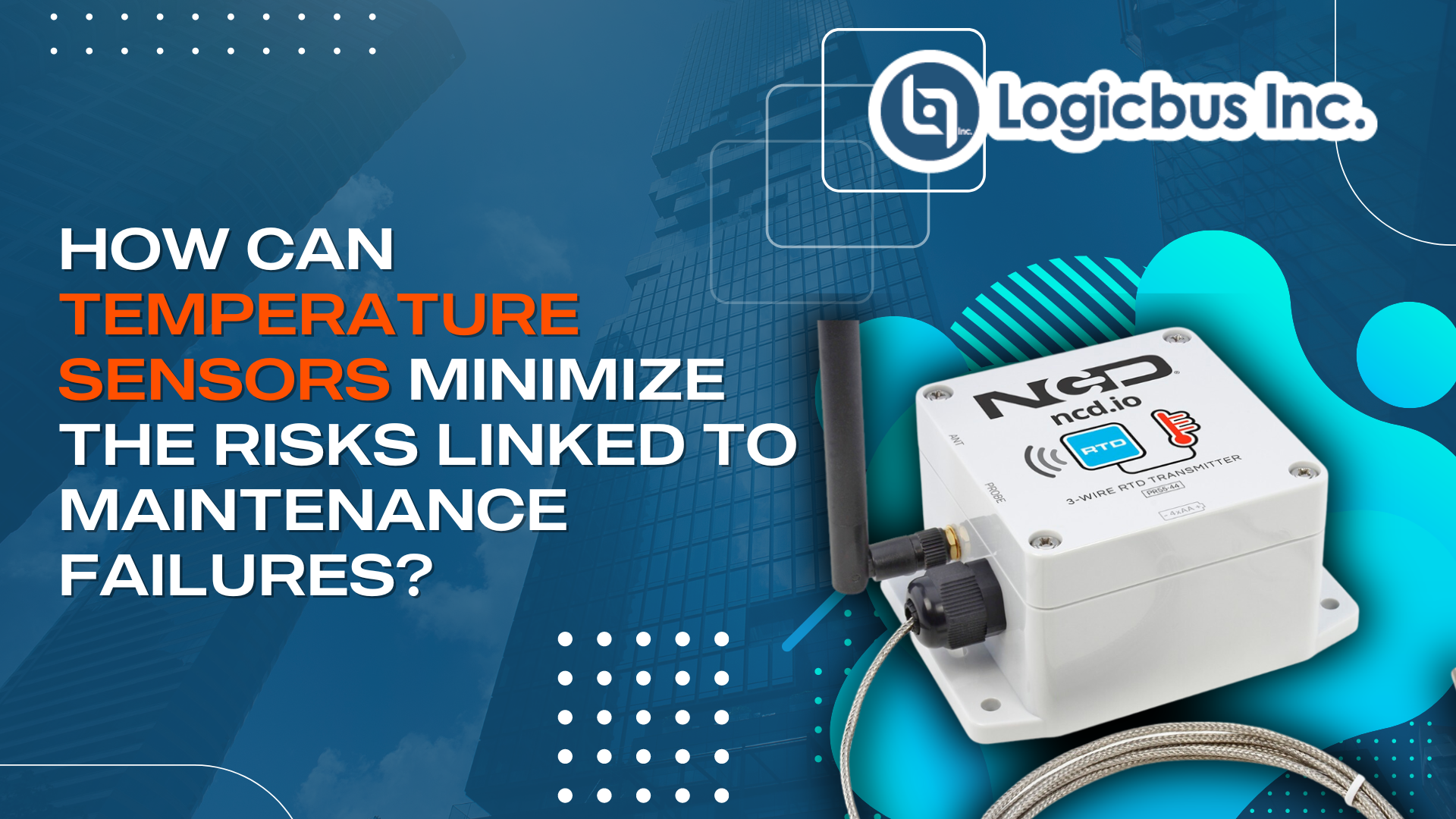The Crucial Role of Temperature Sensor Probes in the Industrial Sector
Temperature sensors are vital instruments for industrial applications as they provide a reliable and accurate method of measuring and monitoring temperatures. Temperature sensors are used to maintain a safe and efficient environment in a wide range of industrial applications, from food processing to HVAC systems, manufacturing, automotive, power plants, chemical processing, refineries, the pharmaceutical industry, and more.
Leveraging temperature sensors in industrial applications are necessary for peak performance and predictive maintenance. These sensors are critical in controlling the environment for guaranteeing safety, precision, and efficiency.
According to Senseye’s 2021 report, The True Cost Of Downtime, large industrial facilities lose 3.3 million hours a year, which equates to almost $1 Trillion, to machine failures. Risk remains intrinsically linked to maintenance failures due to using traditional maintenance models rather than predictive analytics to understand variables and patterns.
In 2021, several incidents of excessive heat impacted equipment, causing power outages in Denver and resulting in widespread disruption.
Now, easy-to-deploy IoT sensors are available with capabilities in the form of condition-based, machine learning-infused predictive maintenance, to address downtime challenges.
For example, NCD’s Industrial IoT Wireless Predictive Maintenance Sensor samples vibration, acceleration, velocity, displacement, frequency, RMS current, and temperature data wirelessly up to a two-mile range using a wireless mesh networking architecture.
This IoT Preventative Monitoring Sensor helps avoid costly repairs, machine downtime, and unexpected system failures by monitoring various parameters such as temperature, pressure, vibration, and flow rate. It can alert operators when readings exceed thresholds and can also provide real-time data analysis to enable proactive maintenance and optimize performance.
How do the IoT Temperature Sensors Work?
IoT temperature sensors work by measuring the temperature of their surroundings and transmitting that data wirelessly to a central hub or cloud-based system. There are several types of temperature sensors used in IoT devices, including thermocouples, resistance temperature detectors (RTDs), and thermistors.
Thermocouples are made of two different metals joined together at one end. When the temperature changes, a voltage is generated across the two junctions, which is proportional to the temperature difference. This voltage can be measured and used to calculate the temperature.
RTDs are made of a length of wire or thin film that changes resistance in response to temperature. The resistance of the wire or film is measured and used to calculate the temperature.
Thermistors are made of a semiconductor material that changes resistance in response to temperature. The resistance of the thermistor is measured and used to calculate the temperature.
Once the temperature is measured by the sensor, it is transmitted wirelessly to a central hub or cloud-based system. This data can then be analyzed and used to make decisions, such as adjusting the temperature of a room or detecting changes in a manufacturing process.
Benefits of IoT Temperature Sensor Probes
Temperature sensor probes are critical to the safety and effectiveness of different industrial processes. These devices aid in the monitoring, control, and management of temperature levels in critical areas, ensuring that machinery runs effectively and goods are made to the highest quality standards.
In industries such as manufacturing, food processing, and pharmaceuticals, maintaining precise temperature levels is critical for various reasons:
- Quality Assurance – temperature control is essential for ensuring consistent product quality. Inaccurate temperature measurements can lead to product defects, compromised quality, or even product recalls.
- Process Efficiency – accurate temperature control helps maintain optimal operating conditions for machinery and equipment, reducing energy consumption and extending the service life of the equipment.
- Safety – temperature regulation is crucial in industries where high heat or extreme cold is part of the process. Proper temperature management can prevent accidents, fires, equipment damage, or downtime.
Industries Benefiting from Temperature Sensor Probes
Temperature sensor probes are indispensable across a range of industries:
Food and Beverage
In food processing, maintaining accurate temperature is crucial for preserving product quality, ensuring food safety, and complying with regulatory requirements. Temperature sensor probes are used in cooking, pasteurization, sterilization, and refrigeration processes. Temperature probes are also important in monitoring the temperature of perishable foods during storage and transportation. Temperature fluctuations can cause spoilage, resulting in food that is unsafe to eat. By monitoring the temperature, companies can take appropriate action to prevent spoilage and ensure the safety of the food.
Pharmaceutical
Accurate temperature control is vital in drug manufacturing, storage, and transportation. Temperature sensors help maintain optimal conditions during production and storage, ensuring the efficacy and safety of pharmaceutical products. Temperature sensor probes help to monitor and control the temperature of pharmaceutical products throughout the manufacturing, storage, and transportation process. They can alert personnel to temperature excursions or fluctuations, allowing them to take corrective action before any damage is done to the product. In addition, temperature sensors can provide a record of the temperature history of a pharmaceutical product, which is essential for quality control and regulatory compliance.
Chemical
The chemical industry relies on temperature sensors to monitor and control chemical reactions, ensuring proper reaction rates, product quality, and safety. Chemical reactions can be highly exothermic or endothermic, and accurate temperature measurements are necessary to ensure that the process remains within safe operating limits. Temperature sensors can provide early warning of potential temperature excursions, allowing operators to take corrective action to prevent accidents or equipment damage.
Oil and Gas
Temperature sensors are used in oil and gas exploration, extraction, and refining processes to monitor equipment performance, prevent accidents, and maintain product quality. Many regulatory agencies require temperature monitoring as part of their compliance requirements. For example, the U.S. Environmental Protection Agency (EPA) requires temperature monitoring at certain points in the oil and gas production process to ensure compliance with environmental regulations.
Automotive
Temperature sensors are vital components in modern vehicles, monitoring and regulating engine performance, exhaust emissions, and cabin comfort. Temperature sensor probes are also used to monitor the temperature of the exhaust system, which is important for controlling emissions. The exhaust gas temperature (EGT) sensor is used to measure the temperature of the exhaust gas. This information is used to adjust the fuel injection timing and other engine parameters to optimize combustion and reduce emissions.
The sensors are important in the automotive industry because they help to ensure that the manufacturing environment is safe and comfortable for workers, as well as help to maintain the integrity of the products being manufactured. Temperature sensors can be used to monitor air temperature, machine temperatures, and storage areas. This helps to ensure that the automotive parts are not exposed to extreme temperatures, which can lead to deterioration or even failure.
How IoT Is Revolutionizing Predictive Maintenance In Industrial Applications
IoT (Internet of Things) is revolutionizing predictive maintenance in industrial applications by enabling real-time data collection, analysis, and decision-making. Predictive maintenance involves the use of data and analytics to predict when equipment is likely to fail, and then performing maintenance before the failure occurs, to avoid unplanned downtime and costly repairs.
IoT devices, such as sensors can be deployed to gather data on equipment performance, environmental conditions, and other relevant factors. This data can then be analyzed using machine learning algorithms and predictive analytics tools to identify patterns and anomalies that indicate potential issues or failure points.
By monitoring equipment in real-time, IoT-enabled predictive maintenance systems can detect issues early on, allowing maintenance teams to take proactive measures to prevent equipment failure. This can result in reduced downtime, lower maintenance costs, and improved equipment reliability.
In addition, IoT-enabled predictive maintenance can also help organizations optimize their maintenance schedules, by identifying the most critical equipment and prioritizing maintenance activities accordingly. This can result in more efficient use of resources and increased overall productivity.
Overall, the use of IoT in predictive maintenance is helping to transform industrial operations, by enabling a more proactive, data-driven approach to maintenance and repair.
Do you need a product customized for your application? Contact us
Visit our website:
www.logicbus.com




sales@logicbus.com | support@logicbus.com | +1 619 616 7350 | Start conversation



